Plant Index
Cercis canadensis
Cercis canadensis L.
eastern redbud, eastern redbud, judas tree
Cultivar(s): Ace of Hearts, Appalachian Red, Covey, Floating Clouds, Forest Pansy, Hearts of Gold, Little Woody, Pauline Lily, Rising Sun, Royal White, Tennessee Pink, Unknown A
Image ID: 12394
Image by: Cressler, Alan M.
Image Collection: NCBG Digital Library
PLANT INDEX
ID_PLANT: CECA4SCIENTIFIC NAME: Cercis canadensis
Include in WOTAS: 0
Publish to Web: 1
Last Modified: 2019-11-30
CULTIVAR INDEX
| Cult_id | Cultivar_name | Action |
| 1227 | Ace of Hearts | View |
| 1228 | Appalachian Red | View |
| 1229 | Covey | View |
| 1230 | Floating Clouds | View |
| 1231 | Forest Pansy | View |
| 1232 | Hearts of Gold | View |
| 1233 | Little Woody | View |
| 1234 | Pauline Lily | View |
| 1711 | Rising Sun | View |
| 1235 | Royal White | View |
| 1236 | Tennessee Pink | View |
| 1237 | Unknown A | View |
GENUS INDEX
GENUS CODE: CERCI2GENUS SCIENTIFIC: Cercis
GENUS AUTHORITY: L.
GENUS COMMON: Redbud
GENUS SUMMARY: A genus of about 6-10 species, trees of north temperate areas. Apparently the basalmost (evolutionarily the earliest diverging) extant genus in the Fabaceae (Lewis et al. 2005).
GENUS IDENTIFICATION:
GENUS REFERENCES: Isely (1975)=Z; Isely (1990)=SE; Robertson & Lee (1976)=Y; Isely (1998)=I.
FAMILY INDEX
FAMILY CODE: FABACEFAMILY SCIENTIFIC: Fabaceae
FAMILY AUTHORITY: Lindley 1836 or LEGUMINOSAE A.L. de Jussieu 1789
FAMILY COMMON: Legume Family
FAMILY SUMMARY: A family of about 730 genera and 20,000 species, trees, shrubs, and herbs, cosmopolitan.
FAMILY REFERENCE: Isely (1990)=SE (throughout the family treatment); Isely (1998)=I; Lewis et al. (2005); Wojciechowski, Lavin, & Sanderson (2004); Wilbur (1963a); Robertson & Lee (1976).
NCBG DESCRIPTIVES
INTRO: A small deciduous tree, usually ranging from 5–10 m (16–33 ft.) tall when mature. Bark of older trunks is gray-brown, and shallowly furrowed and ridged, sometimes flaky. Leaves are alternate, 5–12.5 cm long, and about as wide or wider. Leaves are typically heart-shaped, without teeth or lobes along the margin. Leaves bear 5 (sometimes 7) prominent veins that branch from the base of the leaf blade. Flowers are small, but showy, pinkish or purplish (occasionally white), and shaped like garden pea flowers. They appear in clusters on older branches or the trunk, usually before the leaves emerge. Fruits are flat pods (legumes), 4–10 cm long, turning from green to brown or black when mature. Redbud, a common forest tree throughout much of the eastern United States, is one of the first trees to flower in spring.STEMS: Pith continuous. Young twigs (1-year-old or less) black or brown or reddish-brown, glabrous. Twigs (2–4 years old) glabrous. Leaf scars triangular, bundle scars 2–3 per leaf scar, stipule scars absent. Bark of mature trunks flaky or furrowed or ridged. Buds axillary or superposed, black or purple or reddish-brown, 2–3 mm long, blunt, glabrous or pubescent, bud scales imbricate or valvate.
LEAVES: Leaves deciduous, simple, petiolate, alternate, 5–12.5 cm long, 6–15 cm wide, cordate or orbiculate or ovate or reniform, leaf margins entire, leaf apices acuminate or acute or obtuse, leaf bases cordate or truncate. Leaf upper surface blue-green or green, glabrous or glabrate. Leaf lower surface green, glabrous or glabrate or pubescent. Leaf venation palmate. Petioles 4–13 cm long. Stipules present, caducous.
INFLORESCENCE: Inflorescences axillary, fascicles or simple umbels, flowers stalked.
FLOWERS: Flowers bisexual. Perianth. Calyx bilaterally symmetric, synsepalous. Sepals 5 per flower, calyx tubes 2–3 mm long, ascending or appressed, purple or red or rose, persistent. Corolla bilaterally symmetric, apopetalous. Petals 5 per flower, 5–10 mm long, spreading or ascending, pink or purple or rose or white, keeled or oblong or ovate, petal apices rounded. Androecium. Stamens 10 per flower, separate. Gynoecium. Ovaries superior, pistils 1 per flower. Gynoecium monocarpous, 1 carpels per flower, styles 1 per pistil, placentation marginal. Other floral features. Hypanthia present.
FRUITS: Fruits legumes, 4–10 cm long, black or brown, fruit maturation 1 years.
COMMENTS: Leaves appear to be simple but are technically unifoliolate, apparently resulting from the reduction of a compound leaf to a single leaflet, as is evident by a small angled extension (pulvinus) at the end of the leaf stalk; flowers emerge in clusters on older branches or the trunk.
HEIGHT: 16–33 ft.
DURATION: Perennial
HABIT: Shrub, Tree
LEAF ARRANGEMENT: Alternate
LEAF COMPLEXITY: Simple
LEAF RETENTION: Deciduous
FLORAL CHARACTERISTICS
SYMMETRY:
BLOOM TIME: February - April
| Jan | Feb | Mar | Apr | May | Jun | Jul | Aug | Sep | Oct | Nov | Dec |
| x | x | x | x |
BLOOM COLOR: Rosy pink/purple flowers
| White | Red | Pink | Orange | Yellow | Green | Blue | Lavender | Purple | Violet | Brown | Not Applicable |
| x | x |
FRUITING PERIOD:
DISTRIBUTION
HABITAT TYPE: Bottomlands, Dry forests, Moist forests
NATIVE RANGE: central & eastern United States
HORTICULTURAL
Plant Sale Text: Redbud is a great small flowering tree for the home. As spring approaches this native produces a beautiful array of flower clusters all along bare branches. This happens before leaves emerge, which makes it all the more showy. Its heart shaped leaves are three to five inches across and can have an attractive yellow fall color. Two to three inch brown, pea-like seed pods will form in clusters around mid-summer. Branches have a zig-zag appearance and this can add great architecture to the landscape during the dormant season. This genus supports up to 19 lepidoptera species.
Bloom Table Text: Redbud is a great small flowering tree for the home. As spring approaches this native produces a beautiful array of flower clusters all along bare branches. This happens before leaves emerge, which makes it all the more showy. Its heart shaped leaves are three to five inches across and can have an attractive yellow fall color. Two to three inch brown, pea-like seed pods will form in clusters around mid-summer. Branches have a zig-zag appearance and this can add great architecture to the landscape during the dormant season. This genus supports up to 19 lepidoptera species.
NCBG Location: Found throughout NCBG Landscapes.
Cultural Notes:
SOIL MOISTURE: Average
LIGHT EXPOSURE: Sun, Part Shade
MINIMUM HARDINESS ZONE: 4
MAXIMUM HARDINESS ZONE: 9
GERMINATION CODE:
WILDLIFE VALUE: Bee Friendly, Butterfly Friendly
DEER RESISTANCE:
GRIM COLLECTIONS
| Coll_id | Project | Collection date | Collector | Action |
| 215 | HORT | 2011-01-01 | Liloia | View |
| 1461 | HORT | View | ||
| 1935 | HORT | 2012-06-05 | MacIntyre | View |
GRIM ACCESSIONS
| acc_id | acc_num | acc_dt | coll_id | Action |
| 216 | 2011-0042 | 2011-01-31 | 215 | View |
| 808 | 1985-0469 | View | ||
| 809 | 1985-0470 | View | ||
| 2057 | 1986-1851 | View | ||
| 2818 | 1987-0318 | View | ||
| 3517 | 1991-0170 | View | ||
| 3746 | 1991-0441 | View | ||
| 4524 | 1992-0680 | View | ||
| 4917 | 1995-0035 | View | ||
| 5082 | 1995-0201 | View | ||
| 5622 | 1995-0746 | View | ||
| 6015 | 1995-1146 | View | ||
| 7644 | 2000-0409 | 2007-07-20 | View | |
| 8360 | 2005-0136 | 2005-04-12 | View | |
| 8361 | 2005-0137 | 2005-04-12 | View | |
| 8362 | 2005-0138 | 2005-04-12 | View | |
| 8363 | 2005-0139 | 2005-04-12 | View | |
| 8364 | 2005-0140 | 2005-04-12 | View | |
| 8365 | 2005-0141 | 2005-04-12 | View | |
| 8366 | 2005-0142 | 2005-04-12 | View | |
| 8380 | 2005-0156 | 2005-04-12 | View | |
| 8382 | 2005-0158 | 2005-04-12 | View | |
| 8383 | 2005-0159 | 2005-04-12 | View | |
| 8384 | 2005-0160 | 2005-04-12 | View | |
| 8385 | 2005-0161 | 2005-04-12 | View | |
| 8386 | 2005-0162 | 2005-04-12 | View | |
| 8599 | 2006-0178 | 2006-08-11 | View | |
| 8766 | 2007-0035 | 2007-03-14 | View | |
| 8782 | 2007-0052 | 2007-03-14 | View | |
| 8790 | 2007-0060 | 2007-03-14 | View | |
| 8792 | 2007-0062 | 2007-03-14 | View | |
| 8844 | 2007-0154 | 2007-06-20 | View | |
| 9148 | 2007-0171 | 2007-07-17 | 1461 | View |
| 9179 | 2012-0109 | 2020-04-08 | 1935 | View |
| 9467 | 2021-0127 | 2021-12-21 | 0 | View |
| 9669 | 2023-0117 | 2023-12-14 | 0 | View |
GRIM PLANTINGS
| plt_num | acc_id | loc_num | pers_num | inst_dt | Action |
| 437 | 216 | 100 | Tomberlin | 2011-02-01 | View |
| 438 | 216 | 46 | Tomberlin | 2011-02-22 | View |
| 439 | 216 | 28 | NCBG staff | 2011-10-25 | View |
| 440 | 217 | 103 | Wenck | 2011-02-01 | View |
| 1543 | 808 | 157 | NCBG staff | 0000-00-00 | View |
| 1544 | 808 | 155 | NCBG staff | 2002-12-15 | View |
| 1545 | 808 | 164 | NCBG staff | 0000-00-00 | View |
| 1546 | 809 | 181 | NCBG staff | 1981-03-26 | View |
| 3361 | 2057 | 11 | NCBG staff | 1967-12-31 | View |
| 3362 | 2057 | 6 | NCBG staff | 1986-12-31 | View |
| 3363 | 2057 | 188 | NCBG staff | 1986-12-31 | View |
| 4678 | 2818 | 8 | NCBG staff | 1979-03-18 | View |
| 4679 | 2818 | 8 | NCBG staff | 1979-03-18 | View |
| 4680 | 2818 | 8 | NCBG staff | 1979-03-18 | View |
| 4681 | 2818 | 8 | NCBG staff | 1979-03-18 | View |
| 5774 | 3517 | 200 | NCBG staff | 1991-12-04 | View |
| 6053 | 3746 | 199 | NCBG staff | 0000-00-00 | View |
| 6852 | 4524 | 200 | NCBG staff | 1993-03-01 | View |
| 7336 | 4917 | 202 | NCBG staff | 1992-01-01 | View |
| 7501 | 5082 | 203 | NCBG staff | 1992-01-01 | View |
| 8136 | 5622 | 204 | NCBG staff | 1993-01-01 | View |
| 8648 | 6015 | 2 | NCBG staff | 1992-01-01 | View |
| 8649 | 6015 | 2 | NCBG staff | 1992-01-01 | View |
| 8650 | 6015 | 2 | NCBG staff | 1992-01-01 | View |
| 8651 | 6015 | 2 | NCBG staff | 1992-01-01 | View |
| 8652 | 6015 | 2 | NCBG staff | 1992-01-01 | View |
| 8653 | 6015 | 2 | NCBG staff | 1992-01-01 | View |
| 10817 | 7644 | 155 | NCBG staff | 2000-01-01 | View |
| 10818 | 7644 | 157 | NCBG staff | 2000-01-01 | View |
| 11640 | 8363 | 153 | NCBG staff | 1967-12-01 | View |
| 11641 | 8364 | 153 | NCBG staff | 2006-06-01 | View |
| 11642 | 8365 | 162 | NCBG staff | 2006-10-01 | View |
| 11647 | 8380 | 153 | NCBG staff | 2006-06-01 | View |
| 11789 | 8599 | 205 | NCBG staff | 0000-00-00 | View |
| 12013 | 8766 | 65 | NCBG staff | 0000-00-00 | View |
| 12034 | 8782 | 71 | NCBG staff | 0000-00-00 | View |
| 12042 | 8790 | 68 | NCBG staff | 0000-00-00 | View |
| 12044 | 8792 | 70 | NCBG staff | 0000-00-00 | View |
| 12086 | 8844 | 73 | NCBG staff | 0000-00-00 | View |
| 12109 | 9148 | 53 | NCBG staff | 0000-00-00 | View |
| 12149 | 9179 | 176 | MacIntyre | 2012-06-06 | View |
| 12272 | 8366 | 142 | Liloia | 2000-01-01 | View |
| 12656 | 0 | 19 | Liloia | 0000-00-00 | View |
| 12852 | 0 | 21 | Liloia | 0000-00-00 | View |
| 12949 | 9467 | 154 | MacIntyre | 0000-00-00 | View |
| 12950 | 9467 | 157 | MacIntyre | 0000-00-00 | View |
| 13007 | 0 | 17 | Liloia | 0000-00-00 | View |
| 13018 | 0 | 15 | Liloia | 0000-00-00 | View |
| 13102 | 0 | 18 | Liloia | 0000-00-00 | View |
| 13111 | 216 | 25 | NCBG staff | 0000-00-00 | View |
| 13257 | 0 | 111 | Wait | 0000-00-00 | View |
| 13629 | 0 | 60 | Liloia | 0000-00-00 | View |
| 14007 | 0 | 29 | Mixon | 0000-00-00 | View |
| 14085 | 0 | 34 | Wait | 0000-00-00 | View |
| 14156 | 9669 | 166 | Neal | 0000-00-00 | View |
USDA PLANTS DATABASE
USDA Symbol: CECA4USDA Common Name: Eastern Redbud
Native Status: L48 (N), CAN (N)
Distribution: USA (AL, AR, CT, DC, DE, FL, GA, IA, IL, IN, KS, KY, LA, MA, MD, MI, MO, MS, NC, NE, NJ, NM, NY, OH, OK, PA, SC, TN, TX, VA, WI, WV), CAN (ON)
Duration: Perennial
Growth Habit: Tree, Shrub
NATIONAL WETLAND INDICATOR STATUS
| Region: | AGCP | AK | AW | CB | EMP | GP | HI | MW | NCNE | WMVE |
| Status: | UPL | UPL | FACU | UPL | FACU | FACU | UPL |
WEAKLEY FLORA
SCIENTIFIC NAME:COMMON NAME:
SYNONYMY:
PHENOLOGY:
HABITAT:
COMMENTS:
RANGE MAP:
Key to Map Symbols
ABOUT FAMILY (Weakley Flora)
Fabaceae Lindley 1836 or LEGUMINOSAE A.L. de Jussieu 1789 (Legume Family)
SUMMARY: A family of about 730 genera and 20,000 species, trees, shrubs, and herbs, cosmopolitan.
REFERENCE: Isely (1990)=SE (throughout the family treatment); Isely (1998)=I; Lewis et al. (2005); Wojciechowski, Lavin, & Sanderson (2004); Wilbur (1963a); Robertson & Lee (1976).
ABOUT GENUS (Weakley Flora)
Cercis L. (Redbud)
SUMMARY: A genus of about 6-10 species, trees of north temperate areas. Apparently the basalmost (evolutionarily the earliest diverging) extant genus in the Fabaceae (Lewis et al. 2005).
REFERENCE: Isely (1975)=Z; Isely (1990)=SE; Robertson & Lee (1976)=Y; Isely (1998)=I.
HERBARIUM RESOURCES
SERNEC: Find Cercis canadensis in Southeast Regional Network of Experts and Collections (if available)UNC SERNEC: Find Cercis canadensis in University of North Carolina Chapel Hill Herbarium - Southeast Regional Network of Experts and Collections (if available)
WEB RESOURCES
USDA: Find Cercis canadensis in USDA PlantsNPIN: Find Cercis canadensis in NPIN Database
FNA: Find Cercis canadensis in the Flora of North America (if available)
Google: Search Google for Cercis canadensis
IMAGE USE RECORDS
ID IMAGE: 12394 - Primary Image FloraQuest Plant Detail Page (Landscape Preferred)ID IMAGE1: 12394 - Primary Image WOTAS
ID IMAGE2: 7275 - Secondary Image WOTAS
ID IMAGE3: 12394 - Primary Image Plant Sale Sign (Landscape Only)
ID IMAGE4: 0 - Primary Image New Plant Sale Label (Portrait Only)
From the Image Gallery
 Image ID: 7275 |
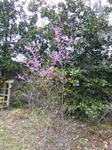 Image ID: 7277 |
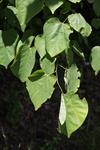 Image ID: 13553 |
 Image ID: 19934 |
 Image ID: 19935 |
 Image ID: 19936 |
 Image ID: 19937 |
 Image ID: 19938 |
 Image ID: 19939 |
 Image ID: 49301 |
 Image ID: 77824 |
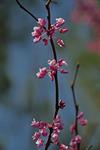 Image ID: 92328 |
 Image ID: 92329 |
 Image ID: 7276 |
 Image ID: 12395 |
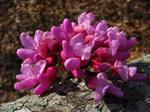 Image ID: 12867 |
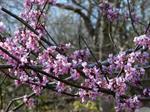 Image ID: 13546 |
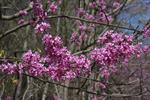 Image ID: 13547 |
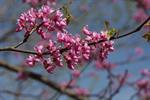 Image ID: 13548 |
 Image ID: 13549 |
 Image ID: 13550 |
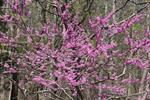 Image ID: 13551 |
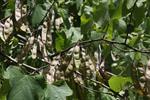 Image ID: 13552 |
 Image ID: 19940 |
 Image ID: 19941 |
 Image ID: 28785 |
 Image ID: 28786 |
 Image ID: 28787 |
 Image ID: 28788 |
 Image ID: 28789 |
 Image ID: 28790 |
 Image ID: 28791 |
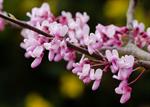 Image ID: 36332 |
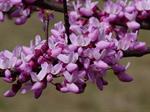 Image ID: 49274 |
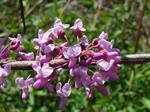 Image ID: 49275 |
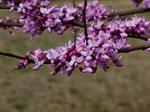 Image ID: 49276 |
 Image ID: 49278 |
 Image ID: 49280 |
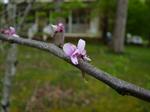 Image ID: 49281 |
 Image ID: 49282 |
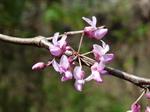 Image ID: 49283 |
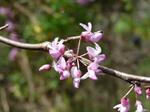 Image ID: 49284 |
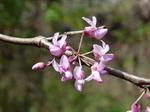 Image ID: 49285 |
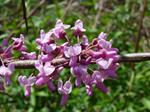 Image ID: 49286 |
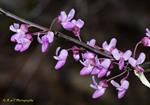 Image ID: 49287 |
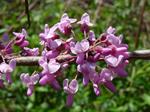 Image ID: 49288 |
 Image ID: 49289 |
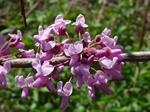 Image ID: 49290 |
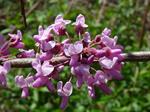 Image ID: 49291 |
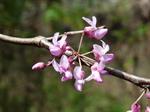 Image ID: 49292 |
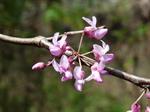 Image ID: 49293 |
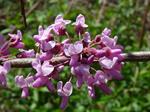 Image ID: 49294 |
 Image ID: 49296 |
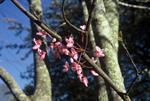 Image ID: 49297 |
 Image ID: 49298 |
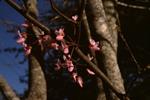 Image ID: 49299 |
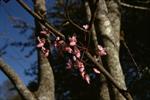 Image ID: 49300 |
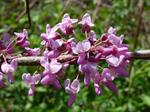 Image ID: 49302 |
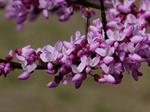 Image ID: 49303 |
 Image ID: 49304 |
 Image ID: 49305 |
 Image ID: 49306 |
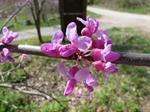 Image ID: 49307 |
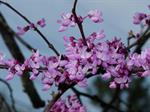 Image ID: 49308 |
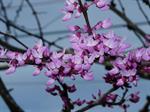 Image ID: 49309 |
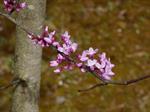 Image ID: 49310 |
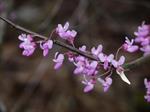 Image ID: 49311 |
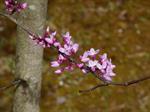 Image ID: 49312 |
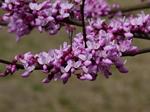 Image ID: 49313 |
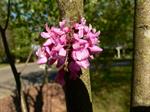 Image ID: 49314 |
 Image ID: 49315 |
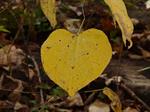 Image ID: 49316 |
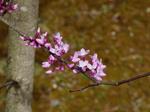 Image ID: 49317 |
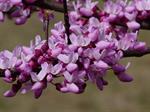 Image ID: 49318 |
 Image ID: 49319 |
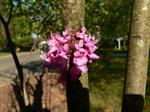 Image ID: 49320 |
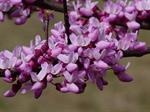 Image ID: 49321 |
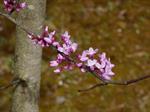 Image ID: 49322 |
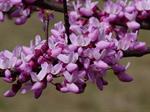 Image ID: 49323 |
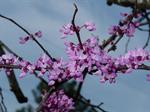 Image ID: 49324 |
 Image ID: 70064 |
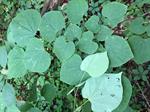 Image ID: 70070 |
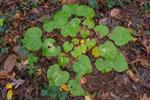 Image ID: 77821 |
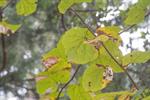 Image ID: 77822 |
 Image ID: 77823 |
 Image ID: 77825 |
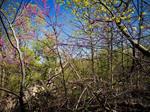 Image ID: 77826 |
 Image ID: 92327 |
 Image ID: 92330 |
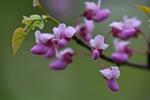 Image ID: 92332 |
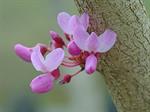 Image ID: 92333 |
 Image ID: 10778 |
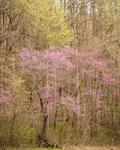 Image ID: 36331 |
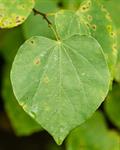 Image ID: 36333 |
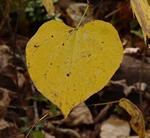 Image ID: 49277 |
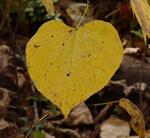 Image ID: 49279 |
 Image ID: 49295 |
 Image ID: 70060 |
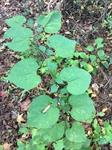 Image ID: 70061 |
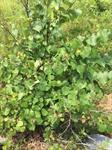 Image ID: 70062 |